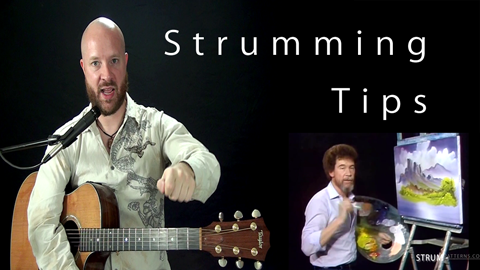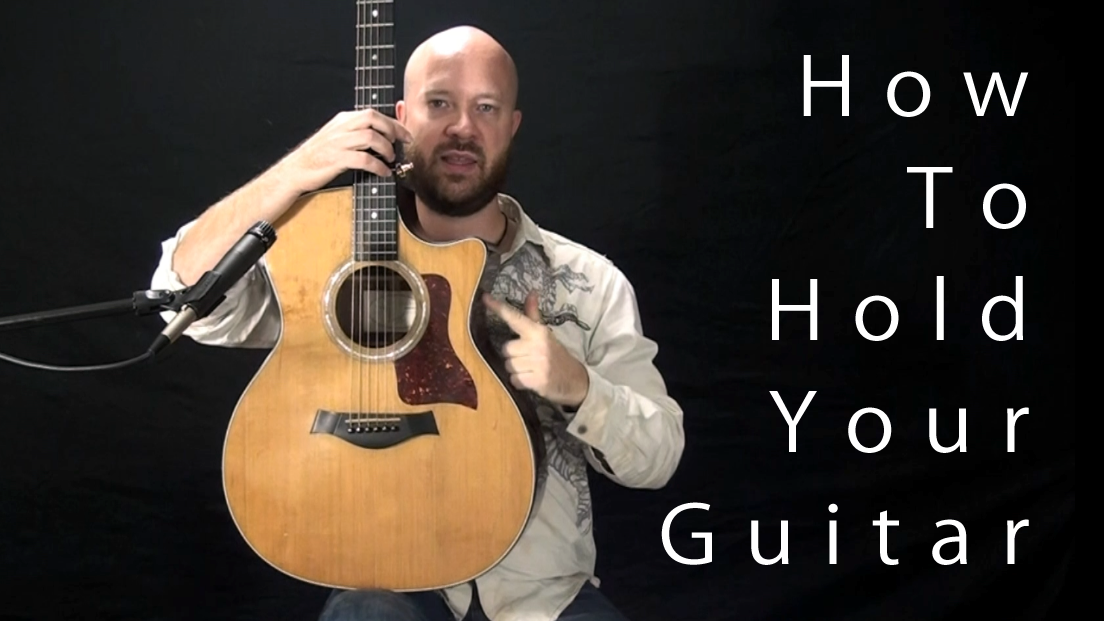Mistakes that beginning guitarists make (PART1)
So you've probably played a chord or two now, but you don't sound anything like your friend who's been playing guitar for 8 years. You play the same song and the same chords, but it just doesn't sound the same. So what's the difference? In this article we'll look at ways to improve the fretting hand (the left hand for most guitarists). In part two, we'll take a look at often overlooked strumming hand. The strumming hand contributes as much to your sound as the fretting hand so don't miss it!
First thing to check out is how hard are you pressing the strings? You want to use the very least amount of pressure you need to make the note ring cleanly-- AND NOTHING MORE! The harder you press the strings, the worse it's going to sound. That extra tension somehow makes its way into your sound, so you need to try to use as little pressure as you can. So play a single note on any string and any fret and see how little pressure you can use to make it sound. Many inexpensive guitars are harder to play, and require more pressure than some of your more expensive guitars. This is because of the string action. String action is how close the strings are to the fretboard. You want the strings as close to the fretboard as they can be without any of the frets buzzing. Cheaper guitars, or damaged ones, have necks with a higher action and require more pressure to play it.
Next, play a chord and listen to it very closely. As you are learning to play chords, I would play each note of the chord one string at a time. This way you can hear where the mistakes are in your chord. If you were to strum the chord, playing all the strings at once, then it can be hard for the inexperienced guitarist to hear the mistakes clearly.
As you play the chord listen for muted strings. Muted strings are caused by a few things. If a string that is played open (without any fingers on it), is not ringing, often a finger is touching that string when it shouldn't be. Sometimes it maybe something else like touching the string with the side or palm of your hand or sometimes a sleeve or jewelry. If the muted note is coming from a fretted note (a note you play with your finger), then most often you are not pressing the string all the way down. To solve this you might need to adjust the angle of your fingers, or maybe add pressure. The fingers should be coming straight down to the fretboard instead of at an angle. Usually, you want to use the very tip of your finger, instead of the pad. If your fingernails are too long, you won't be able to use the tip of your finger, so keep those nails trimmed!
Another sound that you want to listen for (you are playing each string separately right?) is buzzing. This can be caused by many things. One of them is not pressing the string down completely. Another culprit is another finger lightly touching the string, but not so much as to completely mute it. Another cause of this is pressing the note down too far away from the fret. For example, the first fret can be played anywhere between the nut (the solid white or black piece near the head with groves for the strings) and the first fret, but you want to play it as close as you can to the next fret as you can. Sometimes it is impossible to get all the notes of a chord to be right up to fret, but you want to get them as close as possible.
Many beginners tend to bend the string when playing them, but you want to avoid this. Instead of pulling on the string, you should be pushing it straight into the neck. Part of the reason players do this, is because of the angle of their fingers. You want the tip of your finger to be standing straight up and down, and not leaning over at an angle. This angle is what often causes guitarists to pull their strings down. Also, make sure you are keeping your fingers bent the right way. You want to have a gentle bend in your knuckles (so they are almost making a "C"). You definitely want to avoid locking your finger where the knuckle is bending the opposite direction. Locking your knuckle like this allows you to add pressure to the string, but it makes changing chords extremely difficult. It also is uncomfortable, and will tire your hand out.
That's about it for the fretting hand mistakes. But, that's only half or your sound. In part II, we will take a look at the strumming hand.









